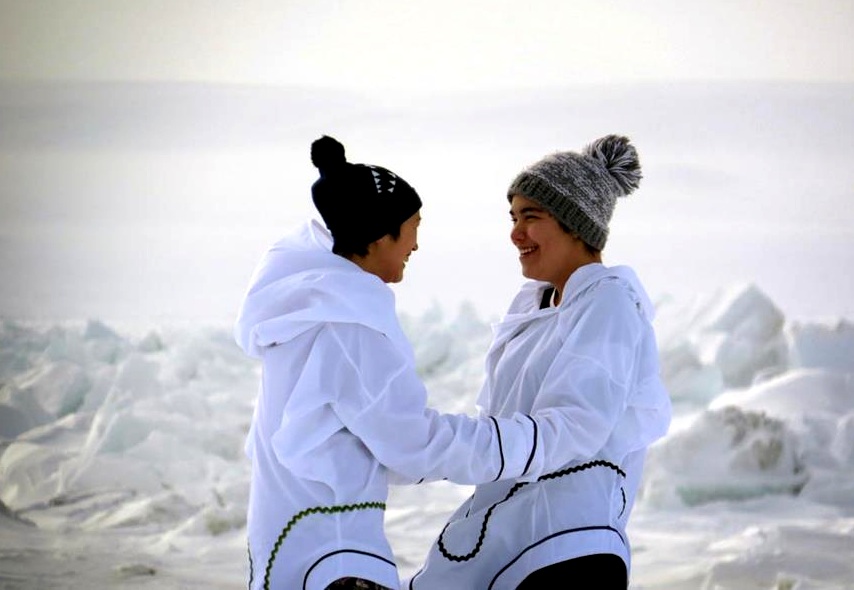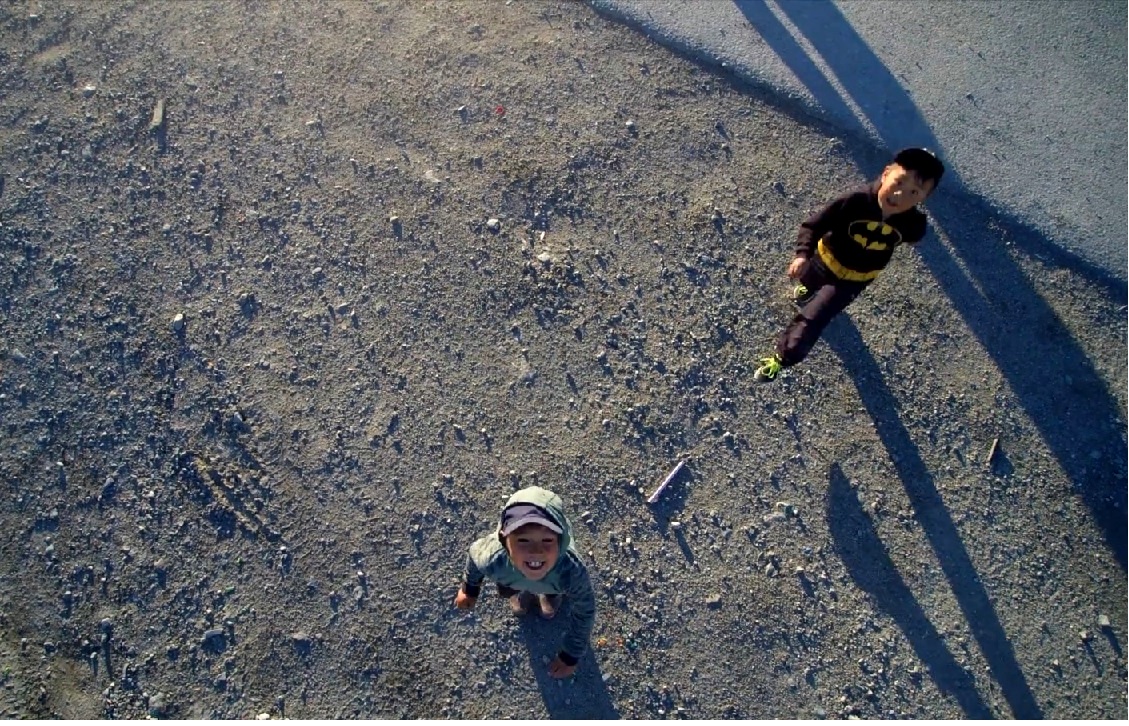Sundance 2019: Throat Singing in Kangirsuk: A Beautiful Glimpse of The Indigenous Arctic
Source: Wapikoni Productions
I was more than honored to be invited to Sundance Film Festival 2019 at the end of last year. Try as I might I simply couldn’t make the trip happen. However, I have spent hours scouring all of the films accepted and am bringing my own coverage and reviews of some of the amazing films making their premieres there.
In keeping with our company’s mission, Queen B. Productions is super excited to bring to you coverage of a collection of films from all walks. We have women lead, woman made films; films from and about People of Color; brilliant documentaries about the human impact on nature; the brutality of war and indigenous traditions we NEVER get to hear about in mainstream.
I hope you enjoy these reviews as much as I have enjoyed the films, and if you ever get a chance, see them and support the incredible artists.
Indigenous Female Voices
In our first review, we are proud to amplify the voices of two young, Inuit filmmakers from the Quebec Arctic. In their first film, Throat Singing In Kangirsuk, filmmakers Eva Kaukai and Manon Chamberland, bring a stunning view of their hometown of Kangirsuk, coupled with their own version of the traditional Inuit art of throat singing. In Inuit culture, throat singing is a game between women to try to make each other laugh. It is the imitation of nature and animal sounds that 19th century Inuit women would use waiting for their men to return home from hunting. It is also used as a form of self expression and a way for mothers to sing their newborns to sleep.
Taught by their grandparents, Kaukai and Chamberland bring this tradition to the forefront to show that their culture is not dead, but very much alive in many ways. Their voices intermingle with drone-caught footage, over four seasons, of their small community in Payne Bay, Nunavik. The remarkable imagery of the land and it’s people filmed by Johnny Nassak, Clark Ferguson and Saviluk Thomassie brings together a menagerie of an ancient civilization, their culture and their connection to the animals, land and sea of this region.
Though only three and a half minutes long, the short packs in an exhibition of an age-old population in modern days, and a time-honored tradition that makes the viewer hungry to find out more.
Source: Wapikoni Productions
The Phenomenal Organization Behind the Scenes
In my thirst to learn more about this film and it’s origins, I looked up it’s production company, Wapikoni Productions. There, I was blown away to find a thriving organization dedicated to indigenous culture and youth that travels all over Canada and internationally.
It’s conception started in the early 2000’s by a young, Atikamekw screenwriter. Manon Barbeau, while grieving the untimely death of her friend Wapikoni Awashish. Manon had already been thoroughly versed in the tragic suicides of young people around her due to isolationism, addiction and other difficulties faced by First Nations people. After Wapikoni’s death by car accident, Manon imagined a mobile production unit for audiovisual works and music that traveled out to the people of the First Nations.
Officially founded in 2003 by Barbeau, the Atikamekw Council and the First Nations Youth Counsel of Quebec and Labrador, Wapikoni Productions began it’s mission of isolation and suicide prevention. It travels to youth of numerous Nations to teach job skill training, and development of artistic, technical and social skills. Young people are trained to use state-of-the-art equipment to tell their unique stories, while preserving First Nation heritage.
There are over 1000 short films available to view on their website that deal with anything and everything First Nations. There are films for/by indigenous young men, women and LGBTQ; concerning their politics, struggles, joys, music and spirituality. Many of these outstanding films have been recognized and awarded in film fests around the world. The site also features the original music pieces of hundreds of Aboriginal youth from differing Nations across Canada and the world.
Source: Wapikoni Productions
In All Honesty…
The importance of this film and Wapikoni Productions is immeasurable. I can only imagine the impact Wapikoni Productions has had on the thousands of lives it has touched. The production of indigenous films in a day and age where the First Nations are barely ever heard of is critical to it’s people’s and cultures survival.
These films bridge gaps between remote, elusive cultures and mainstream culture, educating us and giving us personal insight into their lives, heritage and struggles. This education is paramount to our understanding of one another and preserving what is left of a population decimated by colonialism, imperialism and ongoing racism.
I, personally, had never heard of throat singing, nor this particular Inuit Nation in Quebec until this short. Authentic Indigenous history has been all but white-washed out of school history books and white supremacy continues indigenous silencing and erasure today.
Which is why diversity in film is imperative to champion. We need more companies, film fests and major production studios to go out of their way to include all that is human. Not only do children need to see themselves in positive ways in the media, but we all need exposure to differences in order to come together. Knowledge is the first step to learning to respect cultures different than our own.
How truly tragic it would be not to be able to know as much as we can about life. Film is the perfect medium to bring that knowledge to those who can’t see it themselves. But it has to be done authentically by diverse voices so we aren’t doomed to repeat many of the same stereotypes already propagated by an industry ruled by one race and gender. What unmitigated fools we are to think we individually know enough to speak for another.
Throat Singing in Kangirsuk makes it’s premiere in the shorts division of Sundance Film Festival, Jan. 24, 2019.
.


